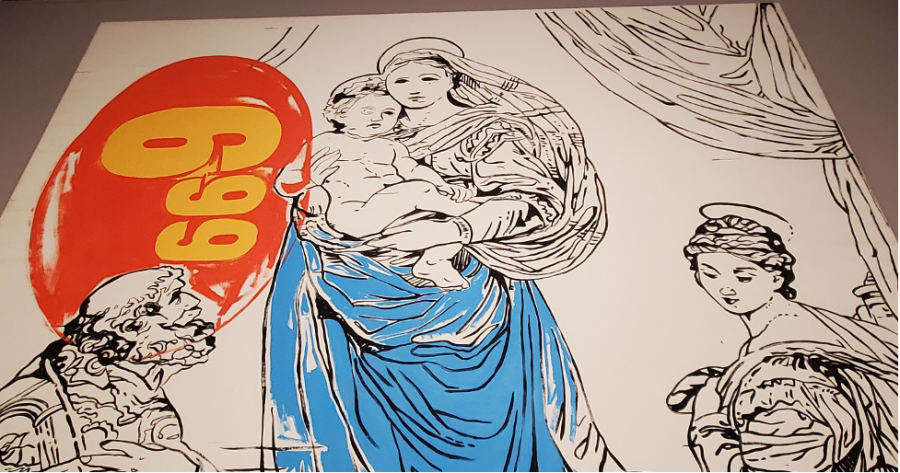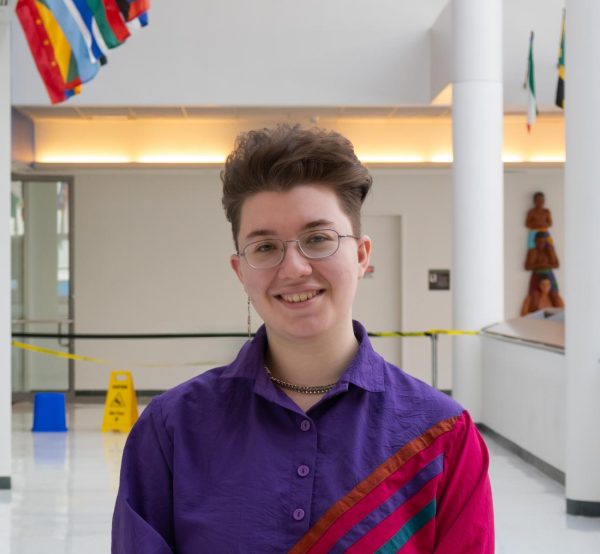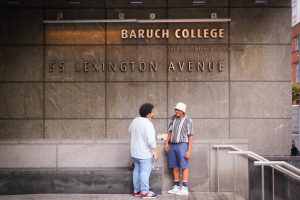New Brooklyn Museum exhibit explores Andy Warhol’s Catholicism
February 18, 2022
The title of “Andy Warhol: Revelation” is a clever piece of wordplay. In a religious context,particularly a Catholic one, revelation can refer to the communication between God and humanity. However, in its more secular usage, it means the revealment of truth.
Both definitions aptly describe the ambitions of the Brooklyn Museum’s special exhibit.
According to the museum’s associate curator, Carmen Hermo, it aims to illuminate how the commercial illustrator turned 20th century pop art icon—and perhaps the most famous gay Catholic this side of Michelangelo—“…both flaunted and obscured his religion and sexuality.”
The exhibit reflects on the context of the “push and pull between sincerity and superficiality, revealing and hiding, traditional and avant-garde” that defined Warhol’s art, the persona he crafted for himself and his life as a whole. However, faith was evidently in conversation with every part of his life.
The exhibit’s broad scope makes it an excellent introduction to Warhol for anyone unfamiliar with him outside of general pop-culture osmosis. It also may be of specific interest to Baruch students in light of Baruch’s Mishkin Gallery receiving a $50,000 fellowship from the Andy Warhol Foundation to fund a future environmental art exhibit. The Brooklyn Museum also offers students an admission discount for special exhibition at $16.
Like the Pittsburg-born Warhol, the exhibit traveled to reach New York.
Originally developed by José Carlos Diaz, chief curator of The Andy Warhol Museum in Pittsburg, it was later displayed in the Speed Art Museum in Louisville, Kentucky. Its organization by Hermo at the Brooklyn Museum is its final incarnation.
At the Brooklyn Museum, the exhibit is split across a variety of intertwined themes, including Warhol’s immigrant and religious roots, his engagement with Catholic visual culture’s focus on the physicality of the human body, his visit to the Vatican and his reproductions of “The Last Supper.”
The exhibit also showcases Warhol’s interest in spiritual and visual transitions, his focus on American material culture and his depiction of and relationship to women—including Valerie Solanas, the radical feminist author of the controversial “SCUM Manifesto,” who shot him in 1968.
Not only is the multimedia nature of Warhol’s work on full display—photography, silk screen prints, films, ballpoint pen drawings, a physical installation and more all share the space—but the exhibit also reveals that far from being an auteur. Warhol found inspiration in collaboration.
The installation titled “Ten Punching Bags (Last Supper)” was a collaboration between him and another famous queer artist of Catholic upbringing, Jean-Michel Basquiat.The exhibit frames Warhol as both insider and outsider to the art community, allowing it to create a nuanced discussion of both the privileges and marginalization he faced within it.
“After moving to New York, Warhol shortened his last name and concealed his immigrant and working-class roots,” the exhibit notes in its wall text.
Visitors will also see his series of vulnerable, homoerotic 1950s drawings—the first fine art he ever created—that was rejected for exhibition by homophobic New York gallery owners.
The exhibit’s informational text also notes that despite his “friendships and collaborations with transgender and gender-nonconforming people,” he had his flaws.
For example, the actress Candy Darling and “unnamed Black and Latinx gender-nonconforming sitters” who sat for a series with “the experience-effacing title Ladies And Gentleman” were “barely compensated.”
This is a cruel irony likely already familiar to the sitters because of how drag and ball culture, which in their current form, traces their roots back to urban working-class trans communities of color in the 1980s, which have consistently faced exploitation and appropriation.
Warhol’s treatment of these sitters and his collaboration with singer and actress Nico—whom the exhibit text describes as having “a documented history of racism” complicates readings of his works intended to criticize American systemic racism.
One of his “Race Riot” works—screen prints of photos of police violence against Black protestors—is on display, and therein lies another cruel irony: images from Warhol’s series sell for millions while Black photographers who document contemporary racial justice protests do not see the same kind of compensation.
Warhol controversially profits off depicting racial injustices while simultaneously underpaying his sitters.
One of the perhaps most poignant examples of Warhol’s human fallibility in the exhibit is buried within its description for “The Last Supper (Detail).” His application of screen printing and hand painting “isolated tender gestures between Christ and the apostles” that “evince a physical warmth and intimacy that he had abandoned at this time” because of how he was “notably phobic in his contact with people living with AIDS.”
Warhol, who saw friends and lovers die from AIDS, created the work in 1986, only four years after then-president Ronald Reagan had laughed at a press conference in response to a journalist asking if the White House would publicly address the AIDS epidemic.
Within the background of “The Last Supper (Detail)” is a reflection of the fear, uncertainty and lack of human connection that has often defined the COVID-19 pandemic.
It is also a reminder that the stigma surrounding HIV today is an obstacle to the treatments, along with cost, according to the Center for Disease Control and Prevention.
If the title of “Andy Warhol: Revelation” has a double meaning, then its portrayal of Warhol gives it a third. In the context of his relationship to his faith, Warhol becomes less of an icon and more of a man—a man with talents, triumphs, and flaws as intertwined as the trinity itself.








